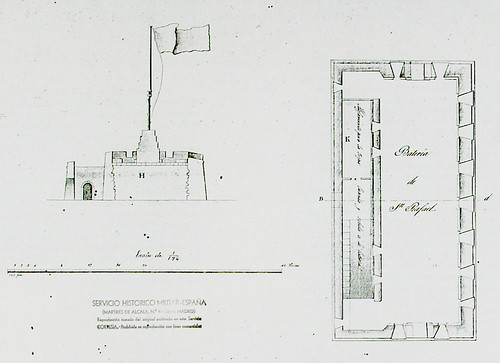Editor’s note: The following is from an article entitled “The Legacy of Guam’s Governor Manuel Muro” in Glimpses of Micronesia 25, no. 2 (1985): 12-15. Republished with permission from Sanchez Publishing House.
The Legacy of Guam’s Governor Manuel Muro
Manuel Muro was born in Spain about 1750 at Estella, Navarre. At the age of eighteen Muro took a Spanish ship to Manila, landing there in 1768. He enlisted in the service of the King as a soldier. Men were needed to fight the Filipino Moros who resisted Spanish sovereignty form the outset, and the British who seriously challenged this sovereignty when they captured Manila in 1762 and held it for two years.
The young Muro rose steadily through the ranks as a soldier during the next ten years. He gained a reputation for courage while fighting the Moros by land and sea in the provinces of Cebu, Bohol and Samar. In 1779 he received the permanent rank of lieutenant and the appointment as Alcalde Major or governor of Samar. He was promoted to captain in 1784 and, a year later, completed his six years of administration as governor. His courage on the battlefield was matched by his fairness, impartiality and good judgment.
Muro’s health had deteriorated by the end of his tenure as governor. A medical board in Manila found him worn out from poor blood circulation and excessive body fluids causing him to gain weight. He left the active service for the relative quiet for his native Estella, where he stayed five years while he regained his strength.
On 10 October 1792, he received an appointment as the governor of the Marianas with the temporary rank of lieutenant colonel. He set sail again from Estella via the Cape of Good Hope for the Pacific and arrived in Hagåtña on 2 September 1794. He relieved Lt. Col. Jose Arlegui y Leoz, who had been governor since 1786.
Disaster and its aftermath awaited him. A year before in March 1793 fire devastated Hagåtña, and in December a typhoon moved over the island causing extensive damage. Muro’s packet boat brought an epidemic which ravaged the island.
The new governor set about rebuilding the city and protecting the island from the British threat. In Hagåtña he designated four barrios and laid out three main streets: Del mar (seaside), De en medio (center street), and De la escuela (school street). He also built three forts, two of them in Hagåtña, and one in Apra Harbor. Fort San Rafael, once located near the present site of the Bank of Hawai’i in Hagåtña, and Fort Santa Cruz in Apra Harbor, now buried near the US Naval Ship Repair Facility dock at the Naval Station (Old Sumai), have passed from the scene. Fort Santa Agueda, in Agana Heights near Government House, remains to this day. It was named after the wife of Governor Muro, Dona Maria Agueda del Camino as indicated in the Orders for the Day of the Presidio for 14 April 1800:
The Governor’s Lady invites all of the men of the three companies who have worked on the fort that bears her name to lunch tomorrow at said fort, where they may later remain to rest.
The walls of Fort Santa Agueda measured nineteen varas (53 feet) in length and sixteen varas (44 feet) in width. Ten cannons protruded from the walls to protect the channel entrance and the city from the sea.
Upon his arrival the governor found the reales almacenes (royal warehouses) in need of extensive repairs. After a few years of the project he completed the real almacen in 1799. It measured thirty-six varas (100 feet) in length and 8½ varas (24 feet) in width. Some thirty-four reinforcing posts were built into the supporting walls for the ceiling and the tile roof. The walls themselves and the azotea were made of mampostería. The enclosure walls extended sixty-nine varas beyond the length of the hammer-shaped building. Three large archways made a beautiful sight in front of the almacen. They are all still standing today. A plaque over the center of the archways reads:
REYANDO EN LAS ESPANAS LA CATO LYCA MAGESTAD DE NUESTRO AGUGUS TO MONARCA DON CARLOS CUARTO POR LA GRACIA DIVINA SE FABRY CARON ESTOS [REALES] ALMACENES BAJO LA [DIRECCI]ON DEL CAPITAN [DON JUAN FR]ANCISCO R[EXIS DE TORR]ES ANO [1799].
While His Catholic Majesty, our August Monarch, Charles IV reigned by divine grace over the Spanish dominions, these [Royal] Almacenes were built under the [direction] of Captain [Don Juan Francisco R[exis de Torr]es in the year [1799].
A mampostería wall, which remains standing at Hagåtña’s Plaza de Espana was built at the back of the casa real, stretching fifty-one varas long (141 feet) and standing three varas (9 feet). This wall has inverted arches and elaborated brick trimmed peaks extending eastward from the ruins of the azotea, its doorway leading to the tool and implement storage building which formerly housed the Guam Museum.
By Marjorie G. Driver, MA and Thomas B. McGrath, SJ




